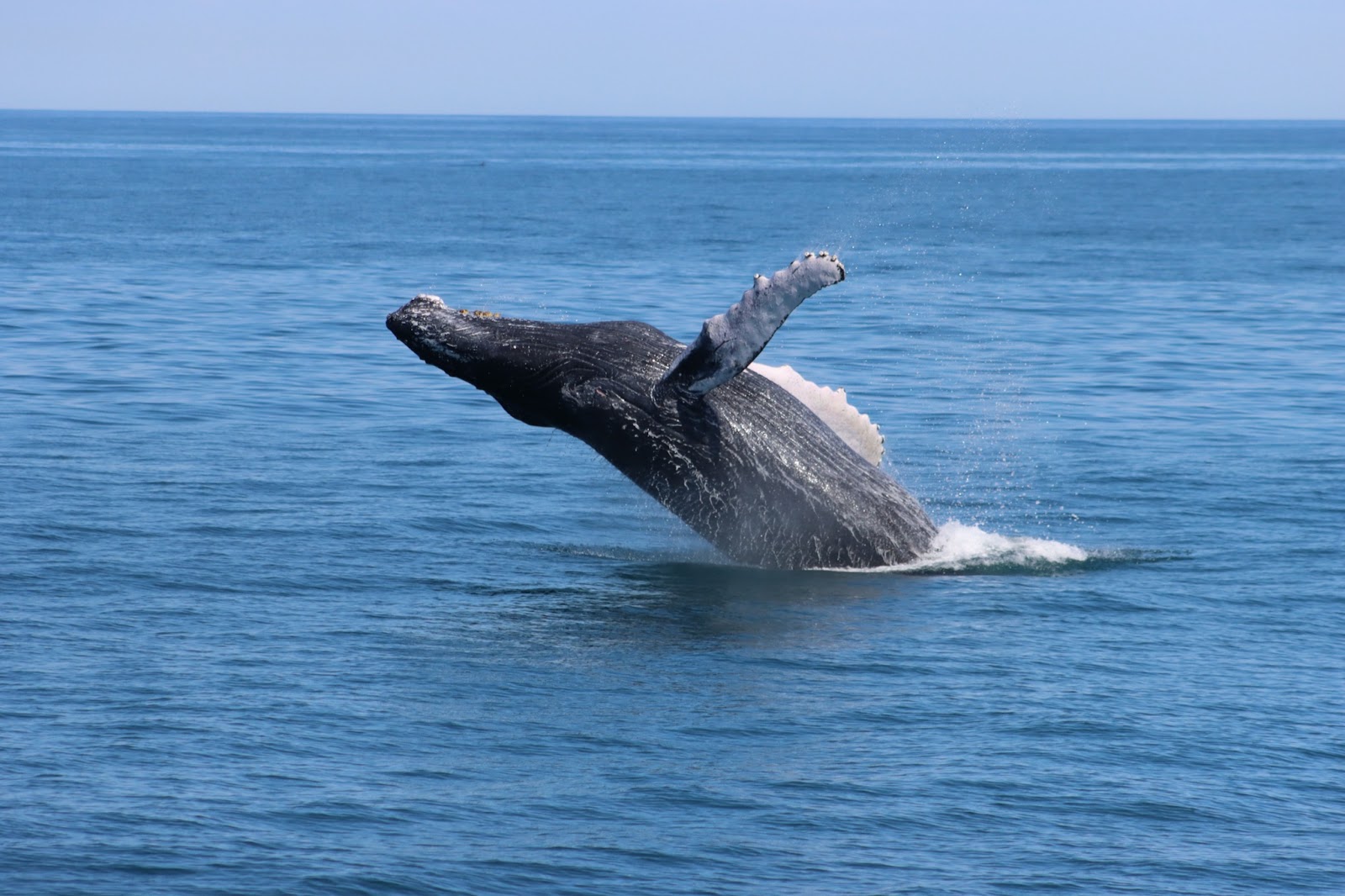The Breach of a Lifetime

On May 15th, 2021, I witnessed a very rare event. Some would even say it was once in a lifetime sight. It seemed like just a normal day on the water while interning on the American Star for Cape May Whale Watch and Research Center. But, halfway through our trip, we see a black object in the distance surface the water. We knew right away that we had a Humpback Whale (Megaptera novaeangliae) on our hands. All of the passengers cheered and clapped with excitement as we started approaching the whale closer and closer. The whale started slapping its pectoral fin on the surface of the water several times. Then suddenly, it fully breached out of the water and everyone gasped in awe. Everyone on the boat was so grateful to have witnessed something like that so close in nature. But then, the whale breached again! And again! By the end of the sighting, the whale had breached at least 40 times. It is not always common to see a humpback whale fully breach, and this one breached more times than we could count. I was the lucky intern to be responsible for photographing the sightings on this trip and I will always look back at these pictures and remember this day vividly.
This got me wondering, why do whales breach? I thought maybe it was a form of recreation, but actually, scientists believe that the sounds created from the breaching and fin slapping are used to communicate or send messages to other whales that may be far away (Frey et. al. 2020). These animals are so large that the sound of the splash is incredibly loud and can be heard from great distances underwater. Marine mammals are very intelligent and communication is an important tool that they use to live and interact with other marine life.
After the whale sighting was over on May 15th, I looked back through my pictures to specifically find an image of the underside of the whale’s tail so we could successfully identify it. Photo identification plays a very important role in our marine mammal research. I have seen many interesting species while interning like; loggerhead sea turtles, Atlantic Bottlenose dolphins, and many species of birds. But, this sighting of a Humpback whale was incredibly memorable and I am eager to see what else I will witness while aboard the American Star!
– Nicole Cappolina, Intern at Cape May Whale Watch and Research Center
Monmouth University ’24
References:
Frey, Michelle, et al. “Why Do Humpback Whales Breach?” Ocean Conservancy, 1 Apr. 2020, oceanconservancy.org/blog/2020/04/01/humpback-whales-breach/.
